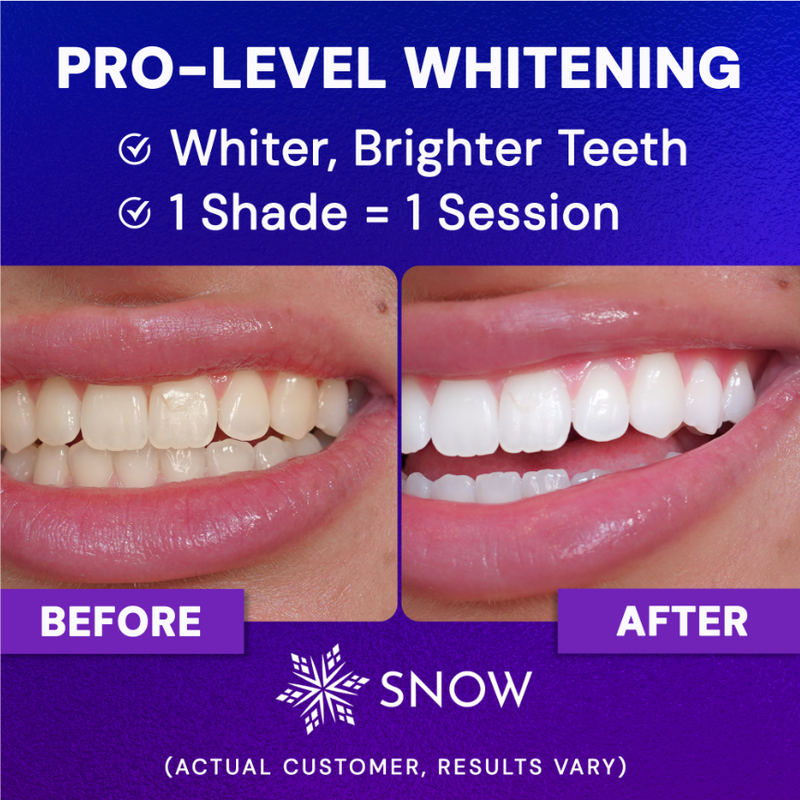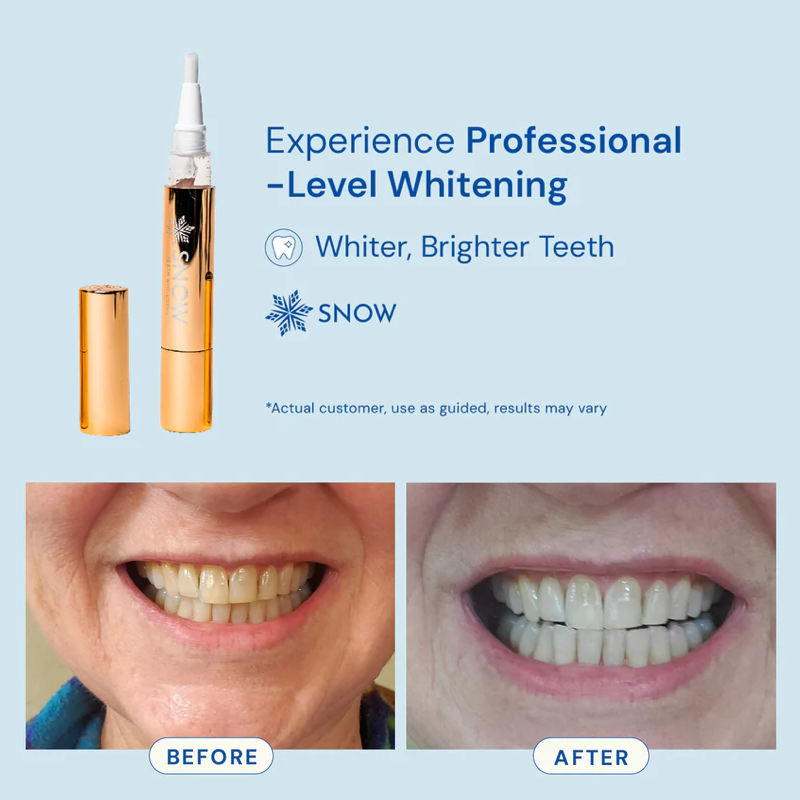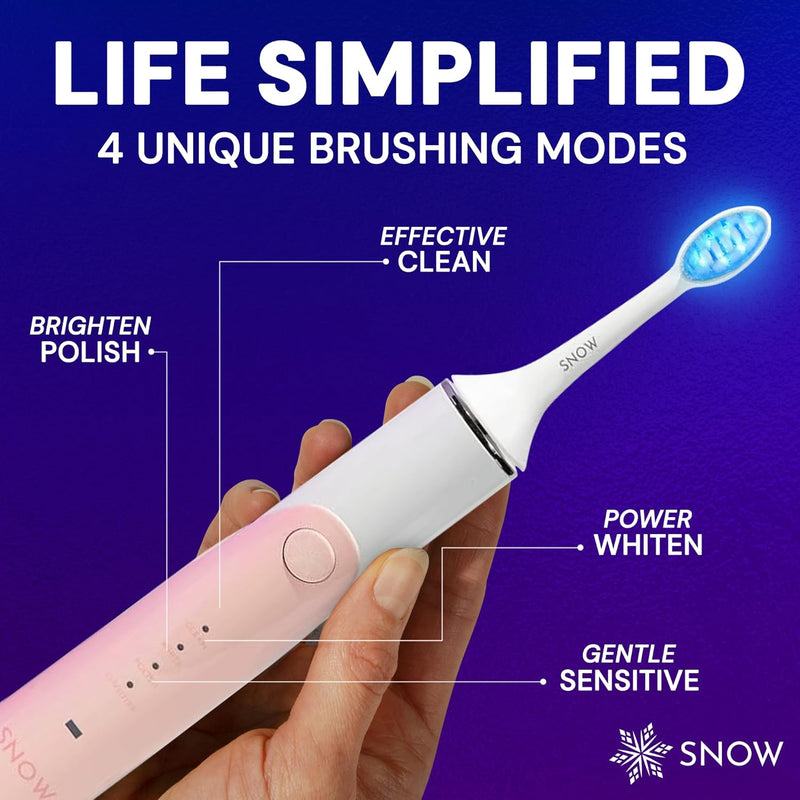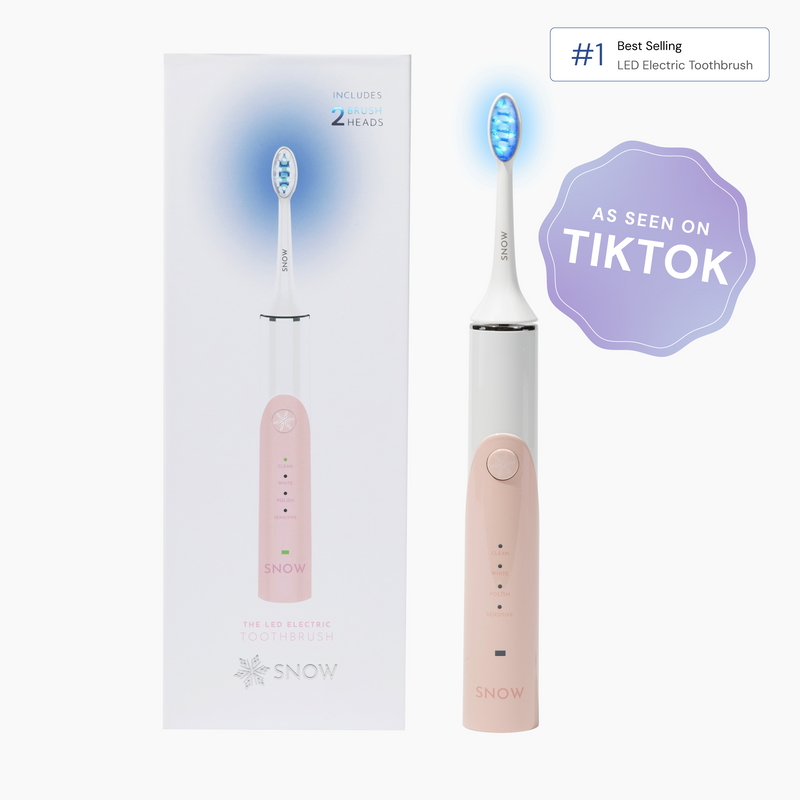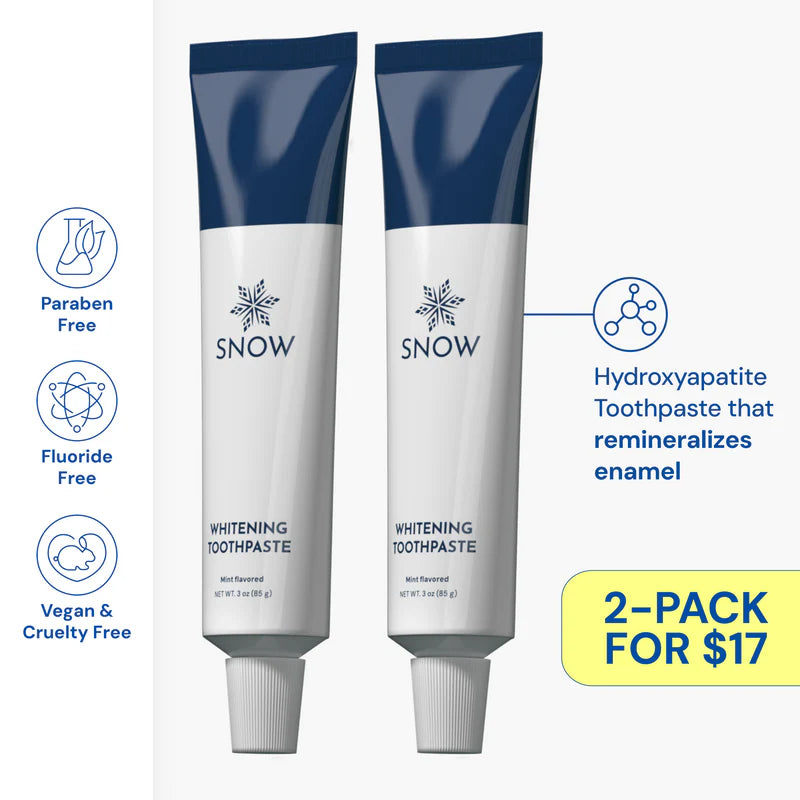After the lengthy process of achieving the straight smile you’ve always dreamed of with braces or Invisalign treatment, it can be tough to hear that you’ve got more to do by wearing a retainer. However, you’ll be happy to know that retainers aren’t known for causing a lot of discomfort, nor are they as cumbersome as braces can be.
If you really want to maintain that picture-perfect smile, there are plenty of things you’ll need to know about retainers. Snow is here to help. We’ve created this guide to all things retainers, including how much they cost, the benefits they offer, the different types of retainers, tips for caring for your retainer, and more.

What is a Retainer?
A retainer is a relatively simple orthodontic appliance custom-made to fit your mouth to prevent teeth from shifting after orthodontic treatment. Braces do much of the heavy lifting to make your teeth straight. But once they come off, your teeth might shift back into their original positions without the help of a retainer.
The reason teeth shift back without a retainer is that the other parts of your mouth that support your teeth—your muscles, gums, and bones—need time to adjust to their new positions. Retainers allow them to do that while keeping your teeth straight.
How Retainers Get Made
After your orthodontist removes your braces, you’ll need to have a retainer made that’s custom fitted to your mouth. Your orthodontist will make an impression of your mouth. They will then send your impression to a dental lab, which will create the retainer. This step should take around one week to complete.
Once the retainer has been made, you’ll return to your provider’s office to ensure that it fits properly. If it does, you'll receive instructions on how to properly use and care for your retainer. It’s crucial to follow these instructions to maintain your beautiful new smile.
Receiving a Permanent Retainer
Permanent retainers get set into your mouth using a special bonding agent. These retainers are not removable by you and are not made in a dental lab. Your orthodontist or general dentist will be able to measure the proper size for you at their office and fix the permanent retainer right there.
The Different Types of Retainers
You might be surprised by how many different kinds of retainers there are. While they all serve the same purpose of keeping your teeth straight, each retainer comes with pros and cons, and depending on your particular orthodontic circumstances, one may be a better option than another.
Permanent Retainers
Permanent retainers go by a few names, including fixed retainers, lingual retainers, or bonded retainers. These retainers are not removable by you, which makes caring for them a lot simpler. But they can also make your oral hygiene routine more complex, and there's a chance that they could cause discomfort to your teeth at first.
A fixed retainer is a wire set onto the inside of your front teeth with a special dental glue. This type of retainer may be called “lingual” because it resides in the lingual, or tongue, area of the mouth. The name “bonded retainer” refers to how your dentist fixes, or bonds, the device to your mouth indefinitely.
One of the biggest advantages of this type of retainer is that it is not visible to others, which means that you can show off your unblemished, straight teeth right after removing your braces.
Hawley Retainers
The Hawley retainer, or Hawley wire retainer, is the original type of retainer prescribed after braces, and it still offers plenty of advantages today. However, other options have cropped up with their own benefits.
Hawley retainers consist of a metal wire and a clear plastic plate custom-made to fit the patient’s mouth. Hawley retainers are fairly comfortable, easy to use, and highly durable.
One advantage that removable Hawley retainers have over permanent retainers is that they do not restrict your diet in any way. You simply take out your retainer when you're ready to eat, and you don’t have to worry about damaging it or getting food stuck in it.
However, it’s important to note that this type of retainer must be cleaned separately to prevent bacteria from growing on it and possibly causing oral health concerns, like gum disease. This extra step is a small one, but it is still worth considering when choosing which retainer is best for you.
Removable Retainers
There are several other brands that offer a removable retainer. Two of the most popular are the Vivera retainer and the Essix retainer.
Vivera and Essix retainers are made from a plastic or polyurethane material, and they are custom-made to fit into your mouth for maximum comfort. These clear retainers can help you avoid unwanted attention while still keeping your smile clear and straight.
The most obvious advantage of a removable retainer is the discretion it provides. But another big benefit is that you can have replacement retainers on hand, so you don't have to panic over losing one. Both the Vivera and Essix retainers do not restrict your diet, and they also make it easy to keep your teeth clean.
Some disadvantages of the Vivera and Essix retainers include the fact that you may need to pay for a new retainer at some point, which can require a new impression of your teeth. And because these retainers are clear, they’re also easier to lose.

How Much Do Retainers Cost?
You may have thought you were out of the financial woods when you completed treatment with your braces, clear braces, or clear plastic aligner, but retainers may cost money, too.
How much they cost will depend on the type of retainer you get and on the dental insurance you have—much like braces costs with and without insurance vary by appliance and coverage.
Permanent retainers cost somewhere between $200 and $600 for each arch. This means that if you need bonded retainers for your top teeth and your bottom teeth, you’ll be paying double. However, with this type of retainer, you most likely won’t ever need a new one, which can potentially save you an additional expense.
One Hawley retainer can cost anywhere from $150 to $350 dollars. This simple plastic retainer is durable and can last for many years, but because they’re removable there’s always a chance that your Hawley retainer could get lost and you have to buy a new one. The replacement cost added to the initial cost could put a big dent in your budget.
Clear plastic retainers can be the most affordable or the most costly orthodontic treatment of all. Essix clear plastic retainers can cost from $100 to $300, while Vivera retainers can cost from $400 to $1,200. However, Vivera retainers come in sets, which means that you won’t have to worry about getting a new retainer if one goes missing.
Something to consider with these plastic retainers is that they're not as durable as a Hawley retainer, so if your retainer breaks, it’s going to cost you even more to replace.
Caring for Orthodontic Retainers
Learning how to care for your first retainer isn’t complicated, but there are steps beyond your usual oral hygiene routine that you need to take.
While a permanent retainer doesn't change things much, a plastic retainer needs to be cleaned frequently to prevent bacteria growth. You’ll want to use a soft toothbrush to carefully clean it with some toothpaste regularly, and you’ll want to store it carefully so that it doesn’t come into contact with anything you wouldn’t want in your mouth.
If you want to keep your clear retainer extra clean, you can soak it in a special cleaner when you’re not wearing it. This should only take five to ten minutes, so it can be done quickly before bed or in the morning.
You'll also want to keep your retainer away from heat, as that has the potential to warp it, which could result in it no longer fitting into your mouth comfortably.
FAQs
Here are some frequently asked questions about this smile-saving orthodontic treatment.
How Long Do I Have to Wear My Retainer?
The length of time that you will have to wear your retainer depends on your particular circumstances, but for the most part, your dentist is likely to recommend wearing it for at least the first year after your braces come off. For many patients, indefinite wear is recommended because teeth may shift as the years go by.
How Quickly Will My Teeth Begin Shifting After I Stop Wearing My Retainer?
You may not experience your teeth moving back to their original place immediately after you take your retainer out, but it will only take around two weeks for shifting to begin.
Are Retainers Covered by Insurance?
You may be able to reduce the cost of retainers with the help of dental insurance, depending on the insurance company you use. For the most part, the retainer cost will not be totally covered, but partial coverage is fairly common.
If you want to know whether the cost of your retainer or of all retainers, is covered by your dental insurance, take a look at your plan or speak with a representative from your insurer today.
Is It Okay to Wear My Retainer at Night?
Not only is it okay to put your retainer in at night, but your dentist will also likely recommend that you do just that. Of course, it’s always important to listen to what they say specifically, as you don’t want to wear your retainer forever.
Whiten Your Teeth with Snow
Now that your teeth are perfectly straight, it’s time to get that glowing smile you’ve always wanted. Take a look at Snow’s collection of award-winning whitening products today.













































